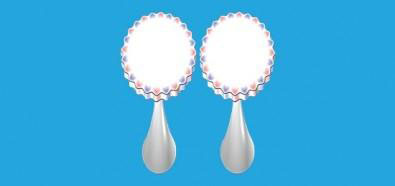| Posted: Jun 07, 2017 |
Device designed to exploit scattering of light by mechanical vibrations
(Nanowerk News) Researchers at the University of Campinas's Gleb Wataghin Physics Institute (IFGW-UNICAMP) in São Paulo State, Brazil, have theoretically developed a silicon photonic device that would enable optical and mechanical waves vibrating at tens of gigahertz (GHz) to interact.
|
|
The proposed device resulted from the projects "Nanophotonics in Group IV and III-V semiconductors" and "Optomechanics in photonic and phononic crystals", both supported by FAPESP. It was described in an article published in Scientific Reports ("Ultrahigh-Q optomechanical crystal cavities fabricated in a CMOS foundry").
|
 |
| These are numerical simulation of acoustic waves propagating at the edges of microdisks. Deformations represent movements caused by acoustic waves. The false color scale represents the intensity of the light electromagnetic field on the disk surfaces. (Image: Gustavo Silva Wiederhecker)
|
|
"Through computer simulations, we proposed a device that could exploit a mechanism for the scattering of light by mechanical vibrations, called Brillouin scattering, and could be transposed to photonic microchips," said Gustavo Silva Wiederhecker, a professor at IFGW-UNICAMP and principal investigator for the nanophotonics project above.
|
|
In recent years, Wiederhecker and his group at IFGW-UNICAMP have focused on this mechanism, which was initially described in 1922 by French physicist León Nicolas Brillouin (1889-1969). In Brillouin scattering, light, which consists of photons, interacts with elastic vibrations, which consist of phonons, at very high frequencies (tens of GHz) in a transparent medium.
|
|
It was impossible to exploit this effect efficiently until the 1960s, when US physicist Theodore Harold Maiman (1927-2007) invented the laser.
|
|
At that time, it was observed that the electromagnetic field of an intense beam of light transmitted along an optical fiber by a laser source induces acoustic waves that propagate along the material and scatter the light at a different frequency from the laser's.
|
|
"This light scattering mechanism is easy to observe in optical fibers, which can be hundreds of kilometers long, because it's cumulative," Wiederhecker said, meaning that it builds up as the waves travel along the fiber.
|
|
"It's harder to observe and exploit in an optomechanical device at the micrometer scale because of the tiny space in which the light circulates." Optomechanical devices simultaneously confine light waves and mechanical waves to permit interaction between them.
|
|
To overcome this size limitation with regard to light propagation, Wiederhecker and his group developed silicon disks with a diameter of approximately 10 microns (µm), equivalent to one tenth of the thickness of a human hair. The disks act as microcavities.
|
|
Using an optical fiber with a diameter of approximately 2 µm, the researchers coupled light to this system. The light is reflected from the edge of the material and spins around the disk cavity thousands of times over a few nanoseconds before dissipating.
|
|
As a result, the light remains in the cavity longer and thereby interacts more with the material, and the optomechanical effects are augmented. "It's as if the light is propagated over a much larger distance," Wiederhecker explained.
|
|
The problem is that such a microcavity does not allow light at any arbitrary frequency to be resonant (to propagate through the cavity), although it does enable the light originally emitted by the laser to propagate. "So you can't exploit the Brillouin scattering effect in these microcavities," he said.
|
|
Using computer simulations, the researchers theoretically constructed not a microdisk with a cavity but a system comprising two silicon microdisks with one cavity each. The disks are laterally coupled, and the distance between their cavities is tiny, of the order of hundreds of nanometers (a nanometer is one billionth of a meter). This system creates what is known as a frequency separation effect.
|
|
This effect slightly separates the frequency of the light scattered by the acoustic waves from the frequency of the light emitted by the laser, which is 11-25 GHz -- exactly the same as that of the mechanical waves - and ensures that the thousands of phonons (elementary excitations of acoustic waves) generated per second in this system (at rates ranging from 50 kHz to 90 kHz) can propagate in the cavities.
|
|
As a result, it is possible to observe and exploit Brillouin scattering in this micrometric system, according to Wiederhecker.
|
|
"We show that with a laser power of about 1 milliwatt - equivalent to the power of a laser pointer for use in a slide presentation, for example - it would be possible to observe the Brillouin scattering effect in a double-disk cavity system," he said.
|

